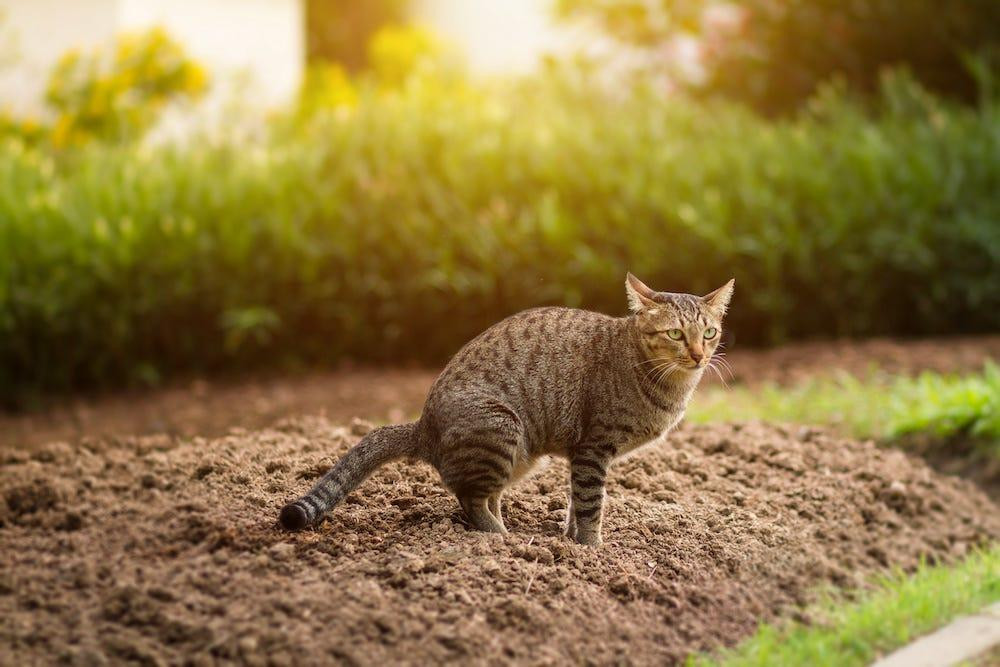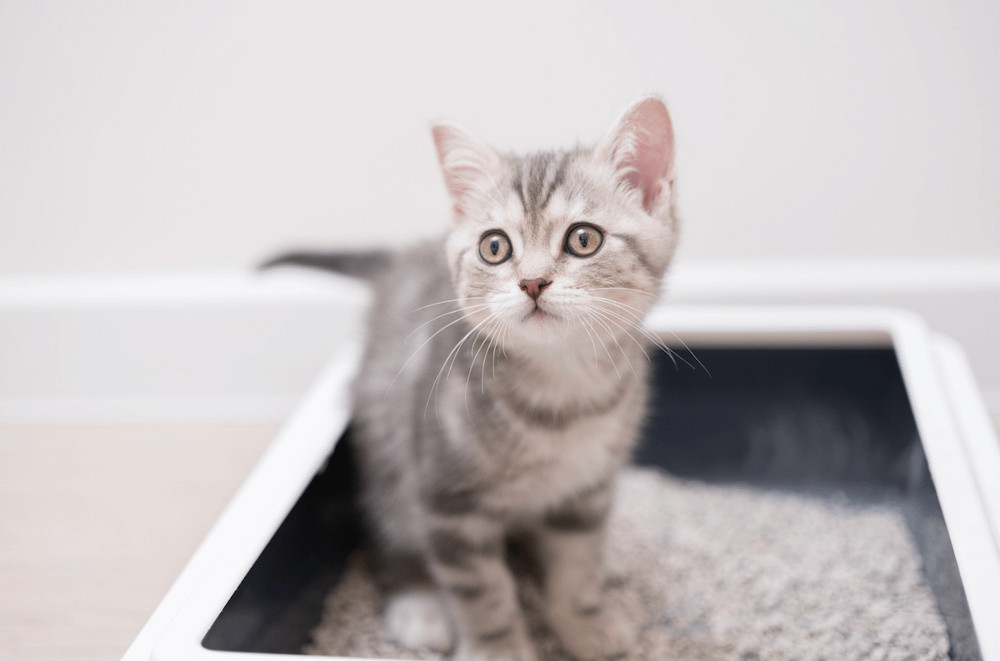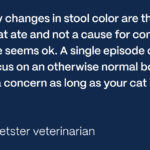Do cats instinctively know to use a litter box, or is it something they learn? Cats use litter boxes due to their innate instincts to bury their waste, a behavior passed down from their wild ancestors for survival. At solcat.net, we’ll explore the science behind this behavior, the reasons why litter boxes are essential for indoor cats, and how to choose the right litter. Learn about feline hygiene, cat behavior, and responsible pet ownership to provide your furry friend with a happy and healthy life.
1. Why Do Cats Use Litter Boxes: The Call of the Wild
Cats are naturally fastidious creatures. Their instinct to use a litter box is deeply rooted in their evolutionary history. To understand why your feline friend heads straight for the litter box, we need to delve into the behaviors of their wild ancestors.
1.1. Survival of the Stealthiest
Cats, unlike dogs, were originally solitary hunters. This meant they had to be extra careful to avoid attracting the attention of predators. According to research from the Cornell Feline Health Center, in July 2025, hiding their waste was a critical survival strategy. By burying their feces, cats masked their scent, reducing the risk of being detected by larger, more dangerous animals.
1.2. Desert Origins and Sandy Preferences
Early cats roamed the deserts of the Fertile Crescent and North Africa. These regions are characterized by soft dirt and sand, ideal for burying waste. The granular texture of sand-like materials became ingrained in their genetic makeup as the preferred medium for their toilet habits. This explains why cats instinctively gravitate towards the feel of cat litter beneath their paws, as stated by the American Animal Hospital Association (AAHA).
 cat digging in litter box
cat digging in litter box
1.3. Hierarchy and Waste Management
Interestingly, studies of feral cat colonies have revealed that dominant cats sometimes leave their waste uncovered as a way to mark their territory. Subordinate cats, on the other hand, diligently bury their waste as a sign of submission. This behavior may also manifest in multi-cat households, where the alpha cat may be less inclined to cover their droppings.
2. Litter Boxes: An Indoor Necessity
For indoor cats, a litter box is more than just a convenience; it’s an essential part of their well-being.
2.1. Recreating the Outdoors, Indoors
Indoor cats lack access to the gardens and sandboxes that their outdoor counterparts use as natural toilets. Providing a litter box allows them to express their natural digging and burying instincts in a safe and appropriate manner.
2.2. Comfort and Accessibility
Ensuring your cat has easy access to a clean and comfortable litter box is crucial. This is especially important for large cats and senior cats, who may have mobility issues. The Litter-Robot is the most popular self-cleaning litter box on the market with 95% customer satisfaction.
2.3. Hygiene and Health Considerations
Depriving your cat of a suitable place to eliminate can lead to a host of problems. Not only can it result in unpleasant odors around your home, but it can also cause serious health issues, such as urinary tract infections, if your cat is forced to hold their urine.
 cat pooping outside
cat pooping outside
3. Kitten Litter Box Training: A Natural Instinct
Kittens typically don’t require extensive training to use a litter box. Their instinct to bury their waste is usually strong enough to guide them.
3.1. Learning by Instinct, Not Instruction
Most kittens begin using a litter box around four weeks of age, without any explicit instruction from their mothers. As long as the litter box is placed in an accessible and familiar location, kittens will usually take to it naturally.
3.2. A Little Encouragement Goes a Long Way
Some kittens may need a bit of encouragement to get started. Gently placing them in the litter box after meals or naps can help them associate it with the act of elimination.
4. The Great Litter Debate: Choosing the Right Type
While cats are generally agreeable to using a litter box, they can be quite particular about the type of litter they prefer.
4.1. Clay vs. Pellets: A Matter of Preference
Research suggests that cats tend to prefer clay-clumping litter and silica gel litter over wood pellets. This may be because clay and silica litters more closely resemble the dirt and sand that cats instinctively seek out.
4.2. Experimentation is Key
Every cat is different, so it’s important to experiment with different types of litter to find one that your feline friend enjoys using. Factors to consider include texture, scent, and dust levels.
5. Litter Box Essentials: Size, Location, and Maintenance
Providing a clean, accessible, and comfortable litter box is essential for your cat’s health and happiness.
5.1. Size Matters
The litter box should be large enough for your cat to comfortably turn around and dig in. A general rule of thumb is that the box should be at least 1.5 times the length of your cat.
5.2. Location, Location, Location
Place the litter box in a quiet, low-traffic area that is easily accessible to your cat. Avoid placing it near food or water bowls, as cats prefer to keep their eating and bathroom areas separate.
5.3. Cleanliness is Next to Godliness (for Cats)
Regularly scooping the litter box is essential for maintaining hygiene and preventing odors. Aim to scoop the box at least once a day, and consider investing in a self-cleaning litter box like the Litter Robot 4 to make your life easier.
 kitten using litter box
kitten using litter box
6. Litter Box Problems: Troubleshooting and Solutions
Even with the best intentions, litter box problems can arise. Understanding the underlying causes can help you address the issue effectively.
6.1. Medical Issues
If your cat suddenly stops using the litter box, it’s important to rule out any underlying medical conditions. Urinary tract infections, bladder stones, and other health problems can make it painful for your cat to urinate, leading them to associate the litter box with discomfort.
6.2. Stress and Anxiety
Changes in your cat’s environment, such as a new pet or a move to a new home, can cause stress and anxiety, which may manifest as litter box avoidance. Providing your cat with plenty of safe spaces and minimizing stressors can help alleviate this problem.
6.3. Litter Box Aversion
Sometimes, cats develop a negative association with the litter box itself. This could be due to a bad experience, such as being startled while using the box, or simply disliking the type of litter being used.
7. The Self-Cleaning Revolution: Is an Automatic Litter Box Right for You?
Automatic litter boxes have become increasingly popular in recent years, offering a convenient and hygienic solution for cat owners.
7.1. How They Work
Self-cleaning litter boxes automatically sift through the litter, separating waste from clean litter and depositing the waste into a sealed receptacle. This eliminates the need for daily scooping and helps to control odors.
7.2. Benefits of Automatic Litter Boxes
- Convenience: No more daily scooping!
- Hygiene: Reduces contact with waste and minimizes odors.
- Cost-Effective: Can save money on litter in the long run.
- Ideal for Multi-Cat Households: Keeps the litter box clean and fresh for multiple cats.
7.3. Considerations Before Buying
- Cost: Automatic litter boxes can be expensive.
- Noise: Some models can be noisy during the cleaning cycle.
- Maintenance: Requires occasional cleaning and maintenance.
- Cat Acceptance: Not all cats readily accept automatic litter boxes.
8. Creating a Cat-Friendly Home: Beyond the Litter Box
Providing a loving and enriching environment for your cat goes beyond just providing a litter box.
8.1. Scratching Posts: Satisfying Natural Instincts
Scratching is a natural behavior for cats. Providing them with scratching posts allows them to sharpen their claws, stretch their muscles, and mark their territory in an appropriate way.
8.2. Vertical Space: Climbing and Perching
Cats love to climb and perch in high places. Providing them with cat trees, shelves, and window perches allows them to survey their surroundings and feel safe and secure.
8.3. Playtime: Mental and Physical Stimulation
Regular playtime is essential for keeping your cat mentally and physically stimulated. Interactive toys, such as feather wands and laser pointers, can help them burn energy and satisfy their hunting instincts.
9. Understanding Feline Communication: Meows, Purrs, and Body Language
Cats communicate in a variety of ways, including vocalizations, body language, and scent marking. Understanding these signals can help you better understand your cat’s needs and emotions.
9.1. Vocalizations: Meows, Purrs, and Hisses
Meows are primarily used to communicate with humans, while purrs can indicate contentment or self-soothing. Hisses and growls are signs of aggression or fear.
9.2. Body Language: Tail Wags, Ear Position, and Eye Contact
A wagging tail can indicate excitement or agitation, while flattened ears are a sign of fear or aggression. Direct eye contact can be seen as a challenge, while slow blinks are a sign of trust and affection.
9.3. Scent Marking: Territory and Communication
Cats use scent marking to communicate with other cats and to establish their territory. They do this by scratching, rubbing against objects, and spraying urine.
10. The Joys of Cat Ownership: Companionship, Affection, and Unconditional Love
Owning a cat can bring immense joy and companionship to your life.
10.1. Stress Reduction and Mental Well-being
Studies have shown that owning a cat can lower blood pressure, reduce stress, and improve mental well-being.
10.2. Unconditional Love and Affection
Cats are known for their independent nature, but they are also capable of forming strong bonds with their owners. They offer unconditional love, affection, and companionship.
10.3. A Source of Entertainment and Laughter
Cats are endlessly entertaining creatures. Their playful antics, quirky personalities, and endearing habits can bring laughter and joy to your life.
At solcat.net, we understand the deep bond between humans and their feline companions. We are dedicated to providing you with the most up-to-date and reliable information about cat care, behavior, and health, so you can provide your furry friend with the best possible life. Visit solcat.net today to explore our extensive collection of articles, videos, and resources, and connect with our community of passionate cat lovers. You can also find us at 950 Alaskan Way, Seattle, WA 98104, United States, or call us at +1 (206) 386-4000.
FAQ: Understanding Your Cat’s Litter Box Habits
1. Why does my cat scratch around the litter box even after they’re done?
This is an instinctive behavior to further bury their waste and cover their tracks, ensuring predators don’t detect their presence.
2. Is it normal for my cat to sometimes miss the litter box?
Occasional accidents can happen. However, if it becomes frequent, it’s essential to rule out medical issues or stress-related problems.
3. Can I use scented litter?
Some cats are sensitive to scented litter, so it’s best to start with unscented options and observe your cat’s reaction.
4. How often should I change the entire litter box?
It depends on the type of litter you use, but generally, you should empty and clean the litter box completely every 2-4 weeks.
5. My cat suddenly stopped using the litter box. What should I do?
Consult your veterinarian to rule out any medical conditions. If your cat is healthy, consider stress factors or litter box aversion.
6. Should I have multiple litter boxes if I have multiple cats?
Yes, the general rule is to have one litter box per cat, plus one extra. This ensures each cat has a clean and accessible place to go.
7. Can I train my cat to use a human toilet?
While possible, it’s not recommended. It can be unhygienic and may cause stress for your cat. Stick to litter boxes for a safe and comfortable option.
8. What if my cat eats the litter?
This can be a sign of anemia or other health issues. Consult your veterinarian immediately if you notice your cat eating litter.
9. How can I make the litter box area more appealing for my cat?
Keep it clean, use a litter type your cat prefers, and ensure the location is quiet and accessible.
10. What are the best types of litter for kittens?
Avoid clumping litter for kittens, as they may ingest it and cause blockages. Non-clumping clay litter is a safer option.
By understanding your cat’s natural instincts and providing them with a clean, comfortable, and accessible litter box, you can ensure their health and happiness. Remember to visit solcat.net for more valuable tips and resources on cat care.

